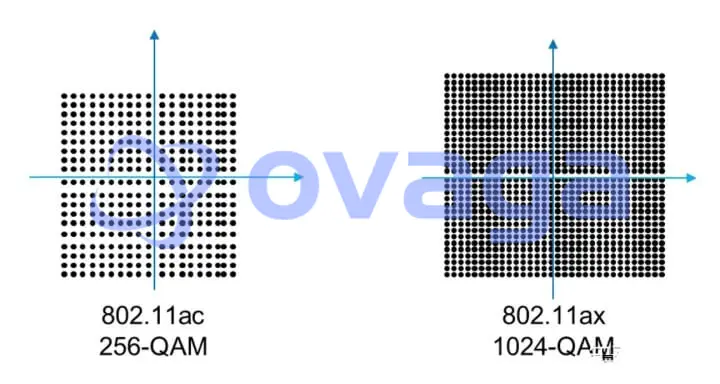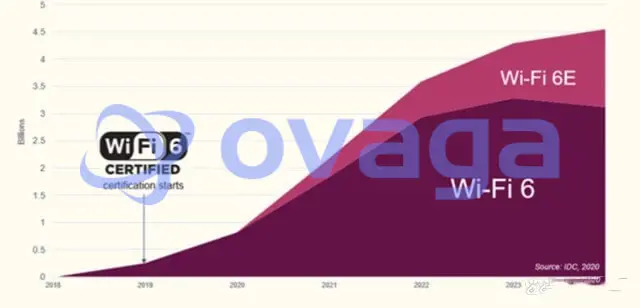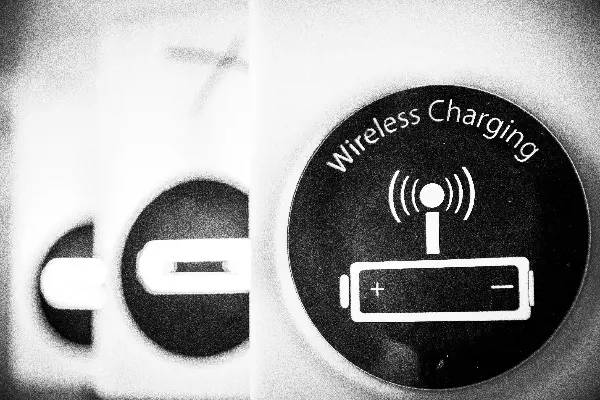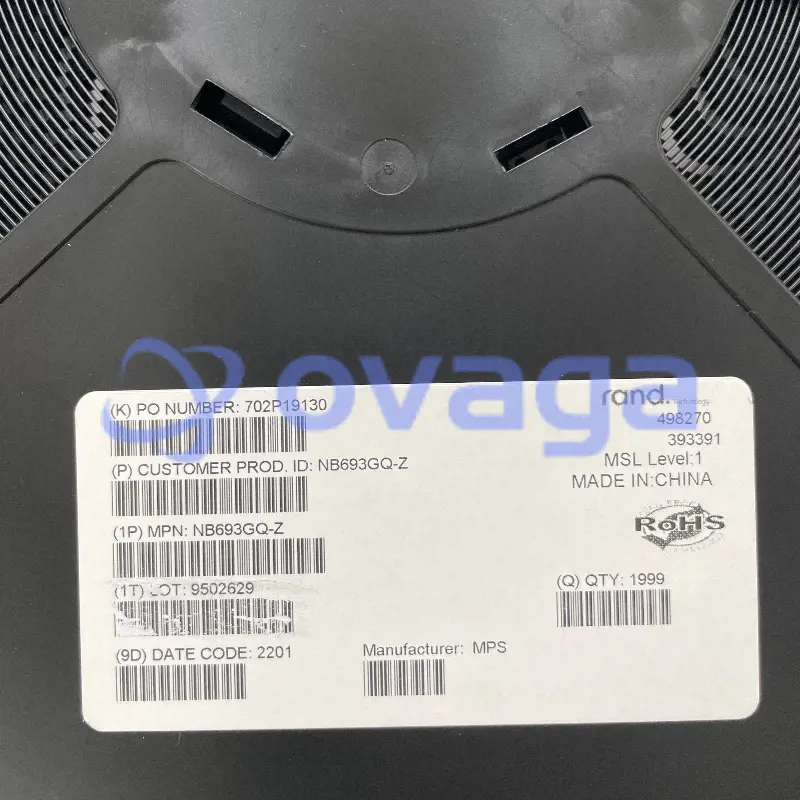What is WiFi 6 and the Industry Chain 2023 Updated
Update Time: Mar 19, 2023 Readership: 2752
Contents
With the advent of the Internet of Everything era, WiFi communication has rapidly expanded into IoT, Telematics and consumer electronics, becoming the most widely used LAN communication technology in the world.
In terms of technology evolution, since the Institute of Electrical and Electronics Engineers (IEEE) developed the first wireless LAN standard 802.11 in 1997, WiFi technology has undergone a technological change almost every 4-5 years.
What is WiFi 6?
Wi-Fi 6 is the acronym for the next generation of the 802.11ax standard.

As the Wi-Fi standard evolves, WFA has chosen to rename Wi-Fi using a numeric designation in order to make it easier for Wi-Fi users and device manufacturers to understand which Wi-Fi models their devices connect to or support. On the other hand, the next-generation nomenclature was chosen to better highlight the significant advancements in Wi-Fi technology, which offers a number of new features, including increased throughput and faster speeds, support for more concurrent connections, and more.
Features of WiFi 6
Compared to its predecessor WiFi5, WiFi6 offers four advantages: "two highs and two lows".
- High bandwidth: 1024-QAM high-order modulation, supporting up to 160MHz bandwidth, nearly 3 times faster.
- High concurrency: intelligent frequency division, multiple devices connected concurrently, 4 times higher capacity.
- Low latency: multiple devices concurrently, significantly reducing queueing and waiting, and reducing latency by 2/3.
- Low power consumption: 30% lower power consumption for on-demand wake-up of terminal devices.
WiFi 6 Core Technology
Wi-Fi 6 (802.11ax) inherits all of the advanced MIMO features of Wi-Fi 5 (802.11ac) and adds many new features for high-density deployment scenarios. The following are the core new features of Wi-Fi 6:
1. OFDMA Frequency Division Multiplexing
Multi-user multiplexing of channel resources is achieved by assigning sub-carriers to different users and adding multiple addresses to the OFDM system.
2、DL/UL MU-MIMO technology
MU-MIMO was introduced in 802.11ac, but only DL 4x4 MU-MIMO (downlink) was supported. In 802.11ax, the number of MU-MIMO is further increased to support DL 8x8 MU-MIMO. With DL OFDMA technology (downlink), MU-MIMO transmission and multi-user multiple access transmission with different RU can be performed simultaneously, which not only increases the concurrent access of the system, but also balances the throughput.

3. Higher-order modulation technology (1024-QAM)
802.11ac uses 256-QAM orthogonal amplitude modulation, each symbol transmits 8bit data (2^8=256), 802.11ax will use 1024-QAM orthogonal amplitude modulation, each symbol bit transmits 10bit data (2^10=1024), the improvement from 8 to 10 is 25%, that is, compared to 802.11ac, 802.11ax has a single spatial modulation. This means that the data throughput of a single spatial stream of 802.11ax is increased by another 25% compared to 802.11ac.

4. Space division multiplexing (SR) & BSS Coloring mechanism
5. Extended Coverage (ER)
Since 802.11ax standard adopts Long OFDM symbol transmission mechanism, the duration of each data transmission is increased from the original 3.2us to 12.8us, and the longer transmission time can reduce the packet loss rate of the terminal; in addition, 802.11ax can use only 2MHz bandwidth for narrowband transmission, which effectively reduces the frequency band noise interference and improves the sensitivity of terminal reception In addition, 802.11ax can use only 2MHz bandwidth for narrowband transmission, which effectively reduces band noise interference and improves terminal acceptance sensitivity and increases coverage distance.
6. Target Wakeup Time (TWT)
Wi-Fi 6 uses a feature called TWT (Target Wake Time), which allows terminal devices to go to sleep when not transmitting data, thus saving up to seven times the battery power.
WiFi6 Industry Chain
Upstream: WiFi Chips and Modules
The upstream of WiFi6 industry chain mainly consists of chips and modules.
WiFi chips are used to implement communication functions between devices.
From the current market situation, WiFi6 chips are mainly divided into router WiFi6 chips, IoT WiFi6 chips and cell phone terminal WiFi6 chips.
At present, the mainstream suppliers of upstream chips are Broadcom, Qualcomm, Myman, Intel and other international chip giant manufacturers, as well as China's Taiwan MediaTek, Rene, etc.; mainland Chinese companies mainly layout IoT WiFi6 chips, Broadcom integration, Lexin Technology and other manufacturers have launched related chips; layout of router WiFi6 chips are relatively few companies, mainly Huawei, SiChang Communications, etc.
WiFi module embedded WiFi chip, manufacturers are more diversified, overseas including Japan Murata, Huanxu Electronics, TDK, South Korea Samsung Electro-Mechanics. Domestic manufacturers are based on technology, Haihua Technology, Bopengfa Technology and Shenzhen BILIAN Electronics, etc
With the rapid penetration of smart home, smart city, virtual reality and other scenarios, WiFi chip market size is growing rapidly.
Statista expects that the global IoT WiFi chip shipments will reach 4.9 billion in 2022, while WiFi6 chips will grow rapidly to over 2 billion sets.
Midstream: Routing equipment and WLAN vendors
Communication network devices include enterprise and home WLAN devices and home gateways.
Routing equipment is the core equipment to realize WiFi6 functions, and the corresponding WLAN network is the necessary network environment to carry Wifi6.
Enterprise routing equipment vendors mainly include Huawei, Starnet, Xinhuasan, Tianyi, Cambridge Technology and other domestic vendors, while Cisco is the main overseas vendor. In addition to providing network equipment, this category also provides WiFi6 campus network construction.
WiFi6 gateway products include Huawei, Tianyi, Skyworth Digital, etc. Home wireless router products include: TP-Link, Tengda, Asus, Xiaomi, etc.
Midstream related manufacturers, Shenyu shares, TongYu communication, JinXinNuo and other manufacturers products RF coaxial cable can be used in WiFi6 router; Digital Vision WiFi6 home gateway products have been shortlisted by China Unicom; Chuling information focus on the development of products 10GPON + 5G + WiFi6 three-in-one products, support downlink WiFi6 wireless networking.
According to China Mobile's 2020-2021 intelligent home gateway product set procurement data calculations, the
GPON + WiFi5 / GPON + WiFi6 / 10G PON + WiFi6 prices in increasing order, respectively, 180 / 210 / 420 yuan / unit, the future with the 10G PON and WiFi6 equipment to enhance the number of collective procurement, broadband products are expected to achieve price and volume increases.
Downstream: Consumer Electronics and Smart Home Terminal
Downstream is mainly the system integration of intelligent application services and support WiFi6 cell phones and other terminal equipment.
Common consumer electronics such as cell phones, laptops, ipads, etc. are equipped with WiFi capabilities.
For smart home, WiFi speakers, network TVs, smart cameras, home central control panels, are the key devices for WiFi networking.
Smart application scenario applications include smart home, smart medical, ultra-clear video, cloud games and AR/VR, NB-IoT and other service applications.
Amazon, Google, Alibaba, Xiaomi and other OEMs, are pushing for the development of voice assistant and smart home functions. Google and Amazon are incorporating 802.15.4 in the aforementioned devices, while BLE mesh network is also applied to a variety of voice assistant devices in China in order to control BLE mesh network lighting and other smart home functions.
IDC data shows that by the end of 2021, global WiFi6 terminal shipments exceeded 2 billion units, accounting for more than 50% of all WiFi terminal shipments, and are expected to grow to 5.2 billion units in 2025.

IDC expects annual shipments of WiFi6 chips to exceed 1 billion in 2022, and 56% of new terminals will support WiFi6.
Popular Blogs
-

How Does the Bytech ...
Wireless charging has gained significant popular...
-

The Difference Betwe...
With the gradual rise of wireless charging techn...
-

Does Wireless Chargi...
Wireless charging technology originates from wir...
-

What is Wireless Cha...
As the name suggests, wireless charging allows d...










